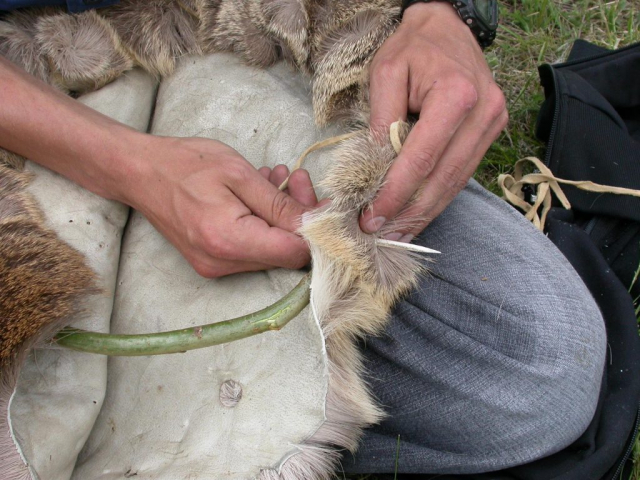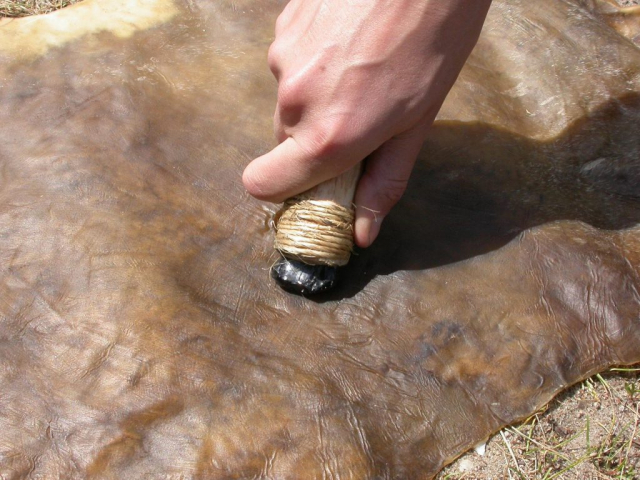Regardless of geographical location, people have used what nature gave them for ages. In the Stone Age one of such materials was, undoubtedly, animal leather. Unfortunately, products made of it are usually not preserved until today and about probable methods of its treatment we can learn observing presently living archaic societies or carrying out archeological experiments. Such experiments are of interest of the members of the Society for Experimental Prehistoric Archaeology.
Leather, to be suitable for treatment, should be properly prepared. First, one should remove fat and so-called “mizdra” (tissue to leather from the inside) and – according to ones needs – hair. Helpful in these processes is soaking of leather in water. Modern hunter-gatherer communities apply here the so-called fumigation of leather (a process which, however, has not been tested by the Society yet). During leather cleaning, we test various tools: flints, obsidian, bone and antler ones.
After cleaning of the material time comes for its tanning. It is this process that gives leather the required softness and smoothness. We are pursuing a project aiming at testing different tanning methods. Currently, we focused mainly on using plants containing chemical substances called tannins (they precipitate proteins irreversibly binding with leather). They include, among others, birch, linden, cornflower, bluebottle and many others. We are trying on to using animal brain which will equally well replace plant tannins.
From dressed of and tanned leather we sew clothing and make objects accompanying people in primeval times in everyday life. Also during these activities we use only flint and bone tools. The role of threads is played by leather straps (also manufactured by us). Leather is also used in archery shields or as membrane in musical instruments.
We invite you to look at the photographs of our objects. We will do our best to keep you informed on the results of our research.








